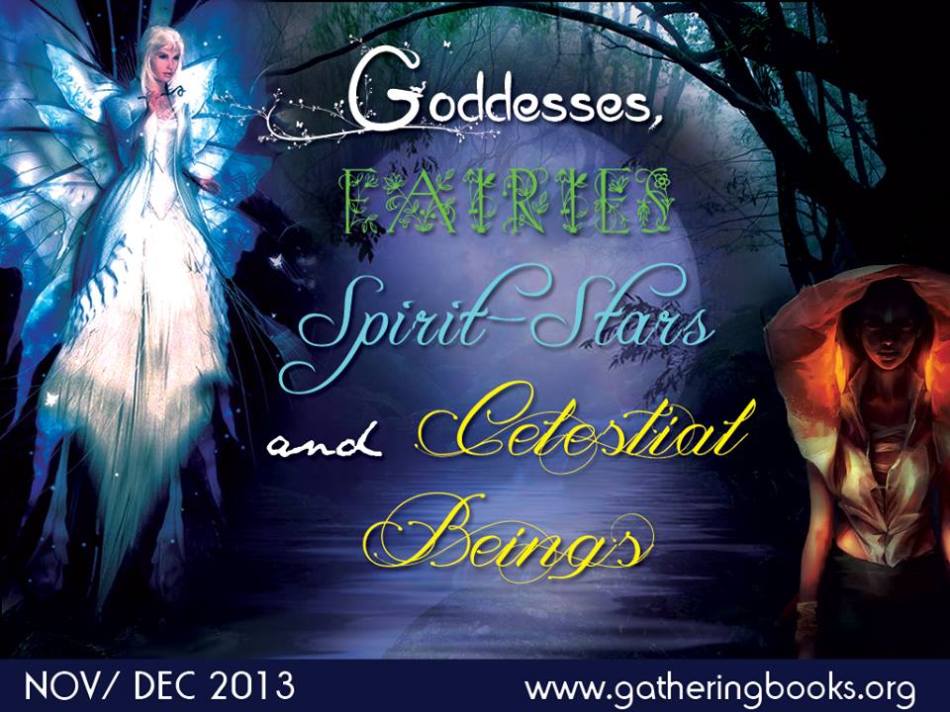
Myra here.
I found this book at the Jurong Regional public library. I spent an entire hour at the library with a bag brimming-filled with books and the heavier spillovers I carried in my hands. We have a double-your-reading-quota promo until January 2014 which means we can borrow twice as many books as per usual. I only browsed through the fairy tales and folktales section and I was already in awe. This is one of the treasures I found at the library.

Unlike the other fairy books that I have read and featured here thus far, this one explores how fairies can be found across Asia, Great Britain, Arabia, Polynesia, North America, India, Europe, South and Central America, The Arctic Circle, and even as far as Africa.
In the Introduction, the authors explained that they have taken quite a broad definition of what it means to be a “fairy.” According to the authors:
“So, what exactly is a fairy? There are many definitions, but in this book we’ve focused on magical beings that love and protect nature. Also, we included only those fairies who are friendly to humans – it wouldn’t be much fun to attract a nasty fairy after all.”

More than anything, I was very pleased to finally find non-Anglican faeries with decidedly Asian features such as the Japanese Snow Queen shown above, the kappa (described as a troll) from Japan, and the Tokkaebi from Korea. I have a feeling that creatures from folk tales and legends from various countries have been interwoven into this grand collection of “fairies” from a great many part of the world. Even Arabia is represented here with magic djinns and instructions on how to produce exotic arabian perfumes and organize a djinn treasure hunt.

I also liked how fairies who lived in Polynesia called the Bonita Maidens (water fairies) are also shown here as well as the Ponaturi or sea fairies from New Zealand. There are even specific instructions given on how to make a menehune nose-flute from large leaves and fairy rose petal beads meant to attract fairies.

Native American Indians are said to have speck-sized Weeng fairies that are astride mosquiotes, gnats and fireflies:

In Africa, there is said to be a princess named Kitila who was turned into a horrible monster by her uncle when her father the king died. Sympathetic fairies who live near the waters helped her get rid of the spell as they bathed in the lake. Check out this gorgeous illustration, one of my favourites from this collection of tales:

What made me smile, though, was the reference to the duwende in the Latin and South American stories. We also call a dwarf as duwende in the Philippines. Now I realize that this must be an influence of our being colonized by Spain for 333 years.
The charming feature of this book is that it also contains fabulous recipes that are placed in quaint handmade or vellum-type papers that give a scrapbook vibe to the entire book. These are meant to attract fairies while the others (petal beads and perfumes) are meant to serve as presents to fairies. The book ends with helpful suggestions on how to throw fantastic fairy parties and how to grow a fairy garden. As an educator, I would also have appreciated a reference list, especially since there are a lot of folktale creatures interspersed with the authors’ discussion of fairies from different parts of the world.
This is a lovely book. Sure to be enjoyed by a lot of young children (and parents who read to them).
Finding Fairies: Secrets for Attracting Little People From Around the World by Michelle Roehm McCann & Marianne Monson-Burton and illustrated by David Hohn. Published by Beyond Words Publishing, 2001. Book borrowed from the library. Book photos taken by me.


AWESOME!!!
LikeLike